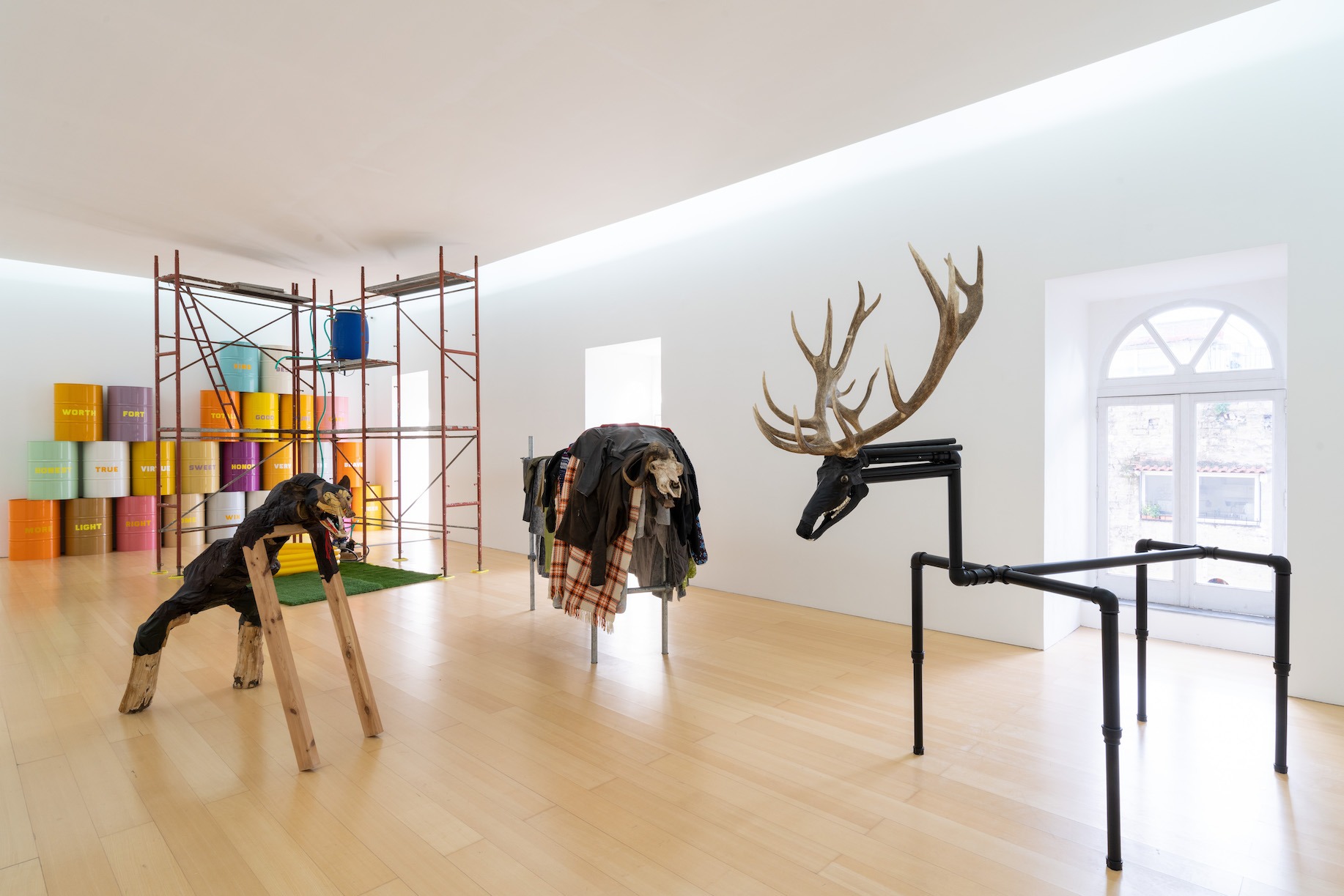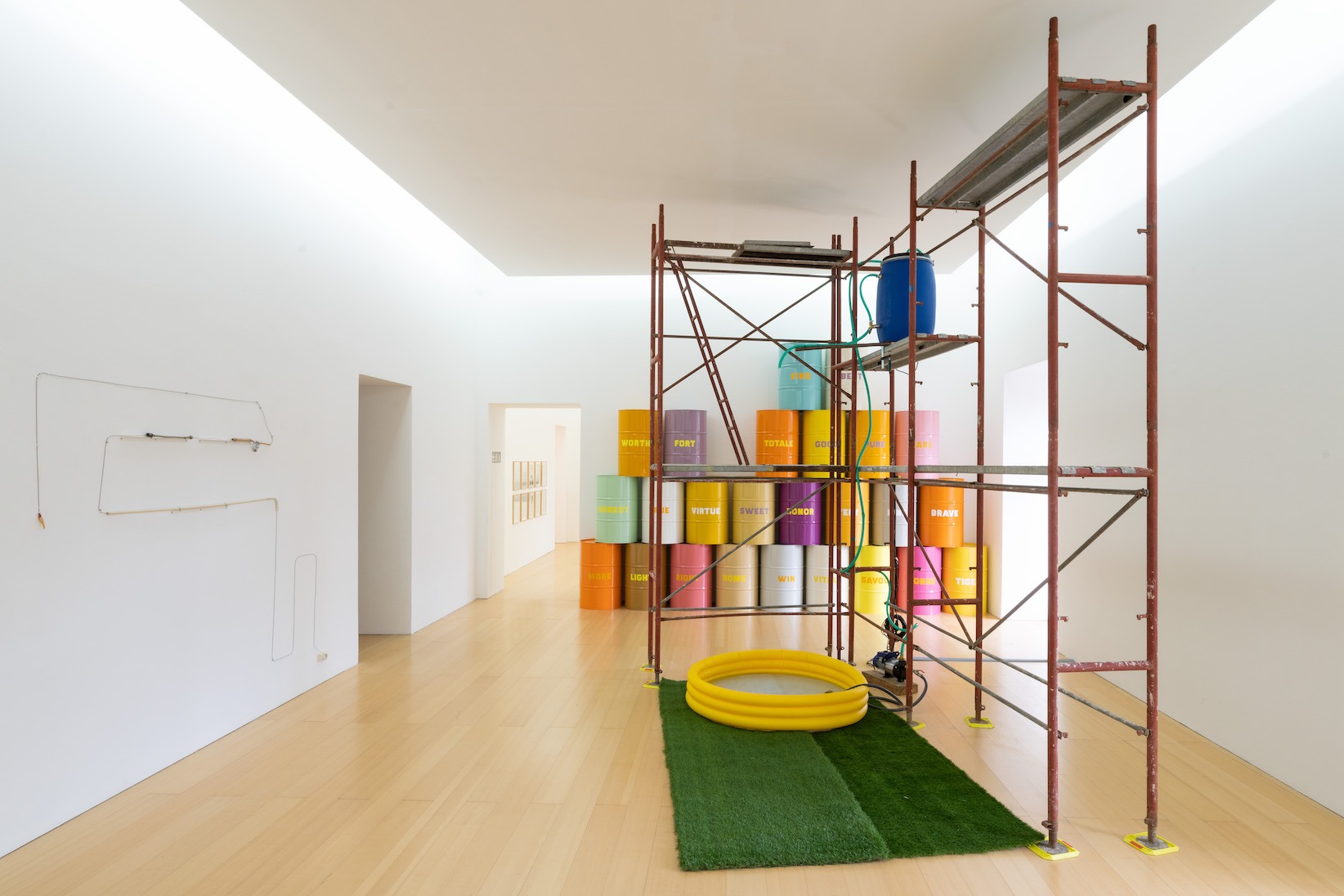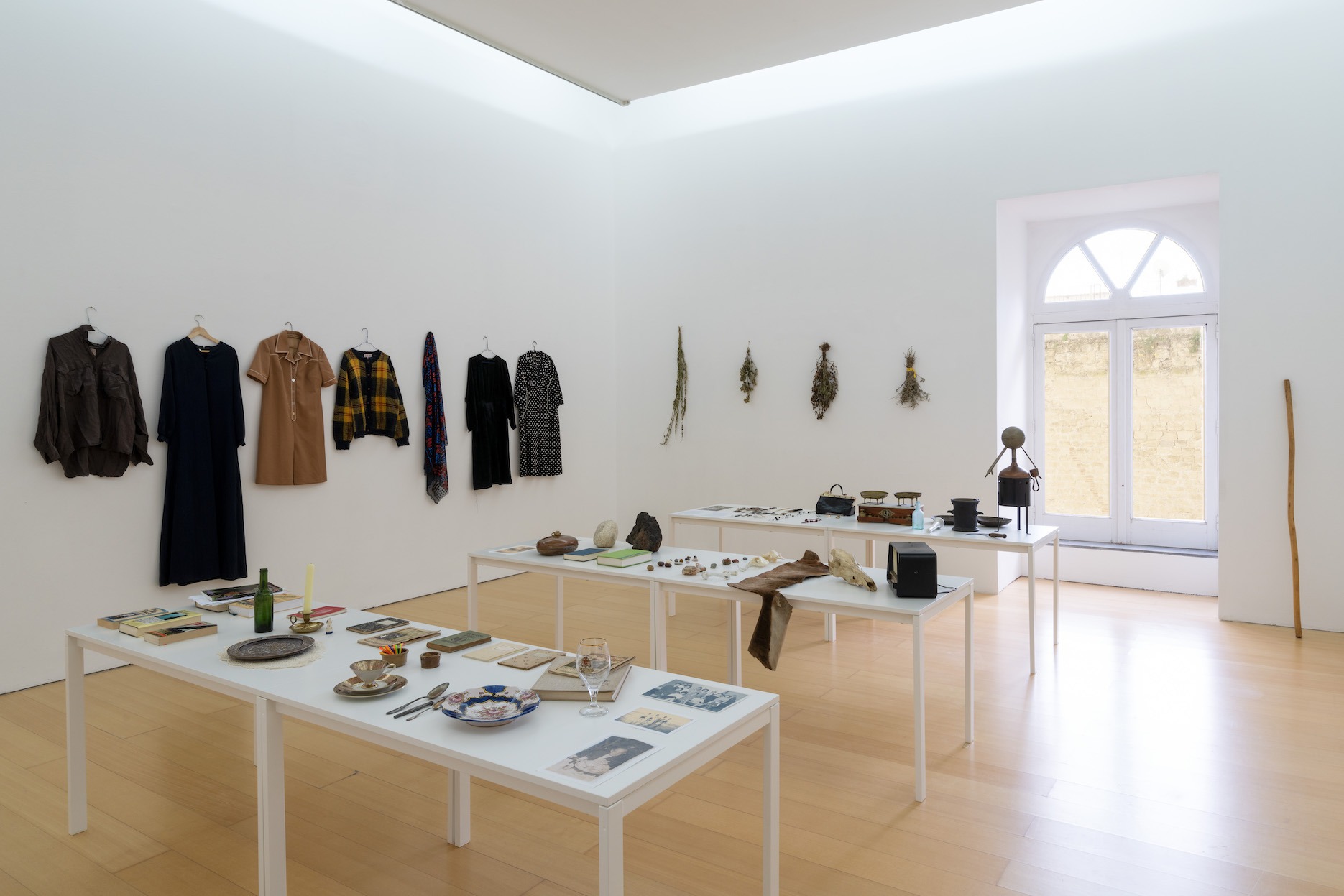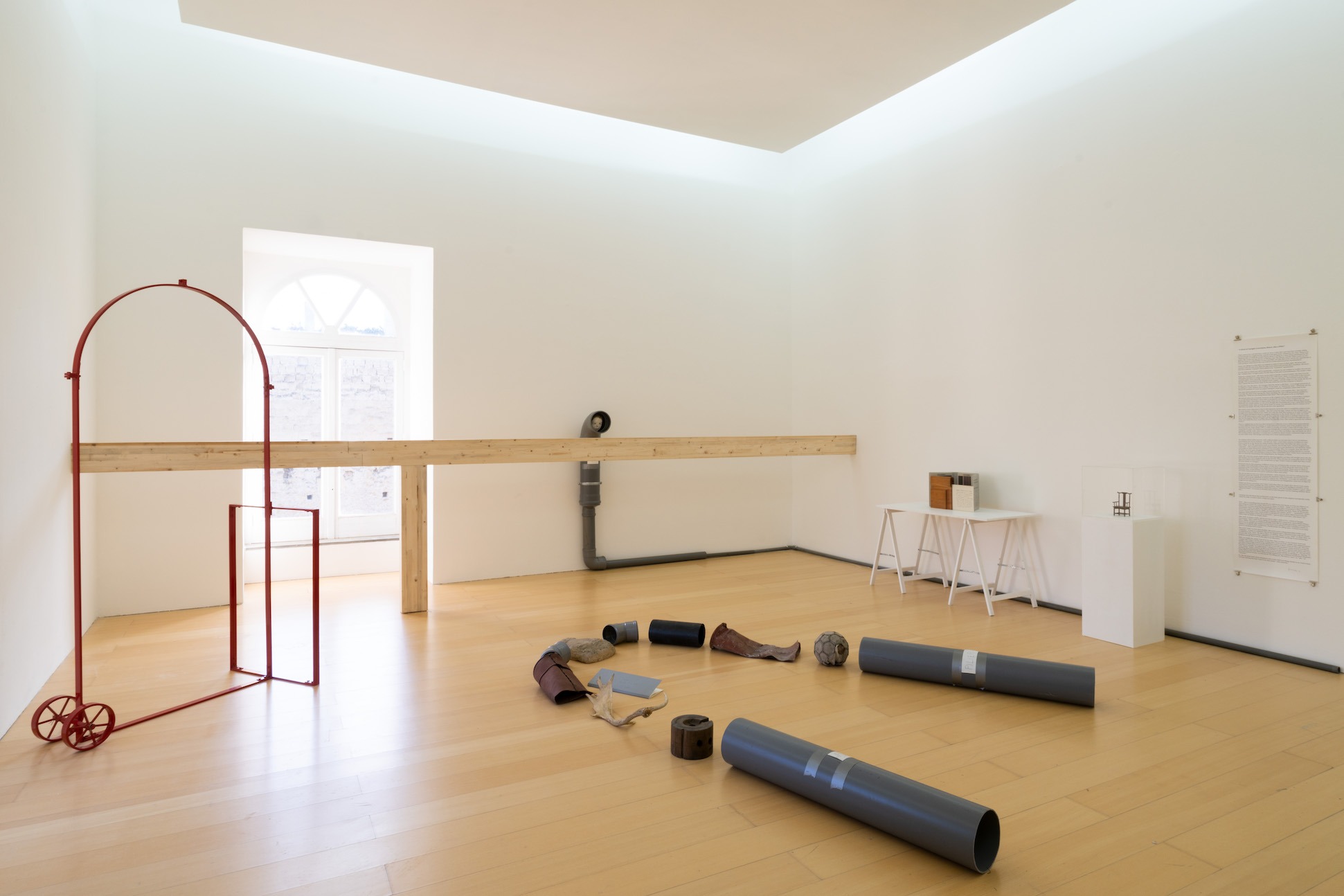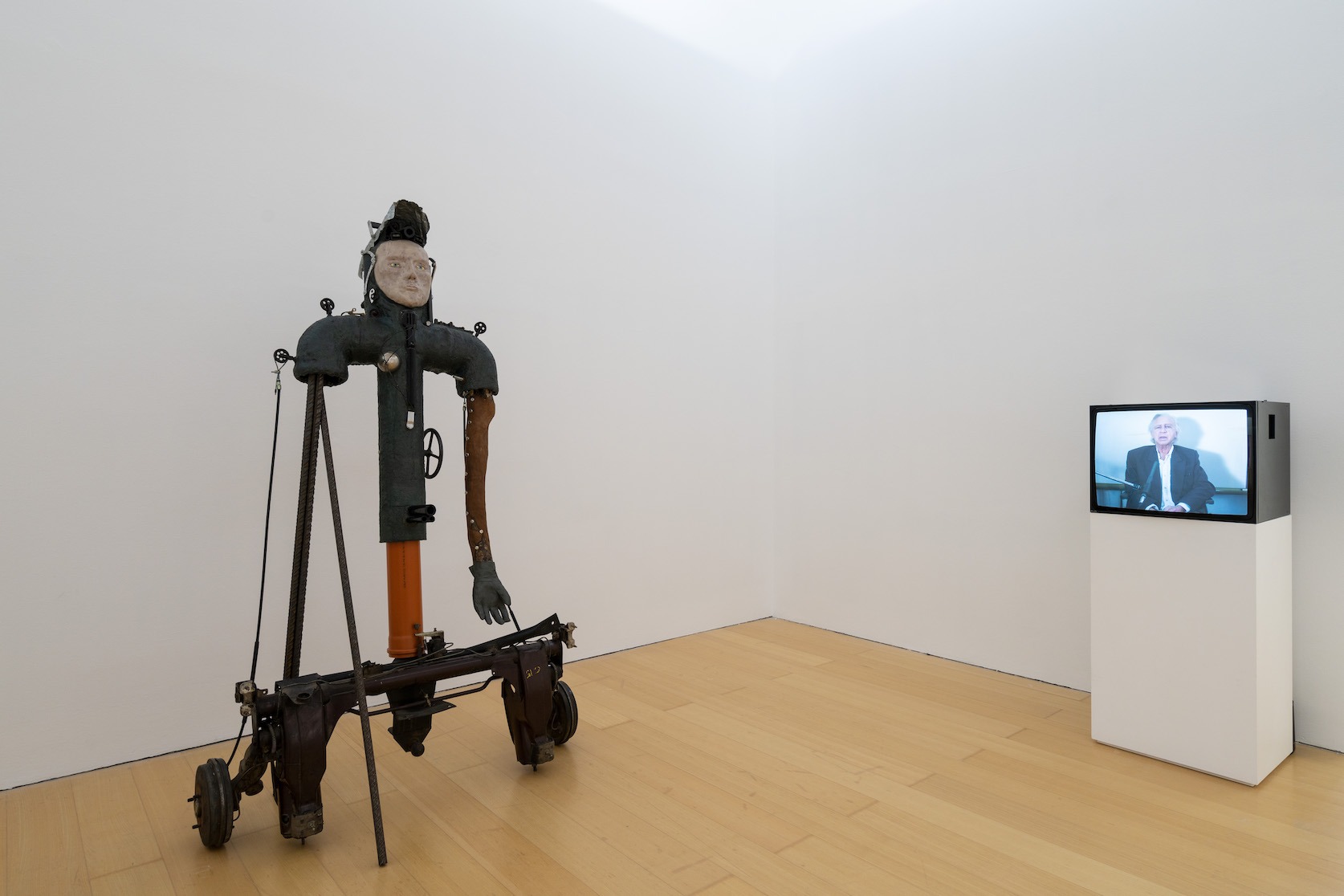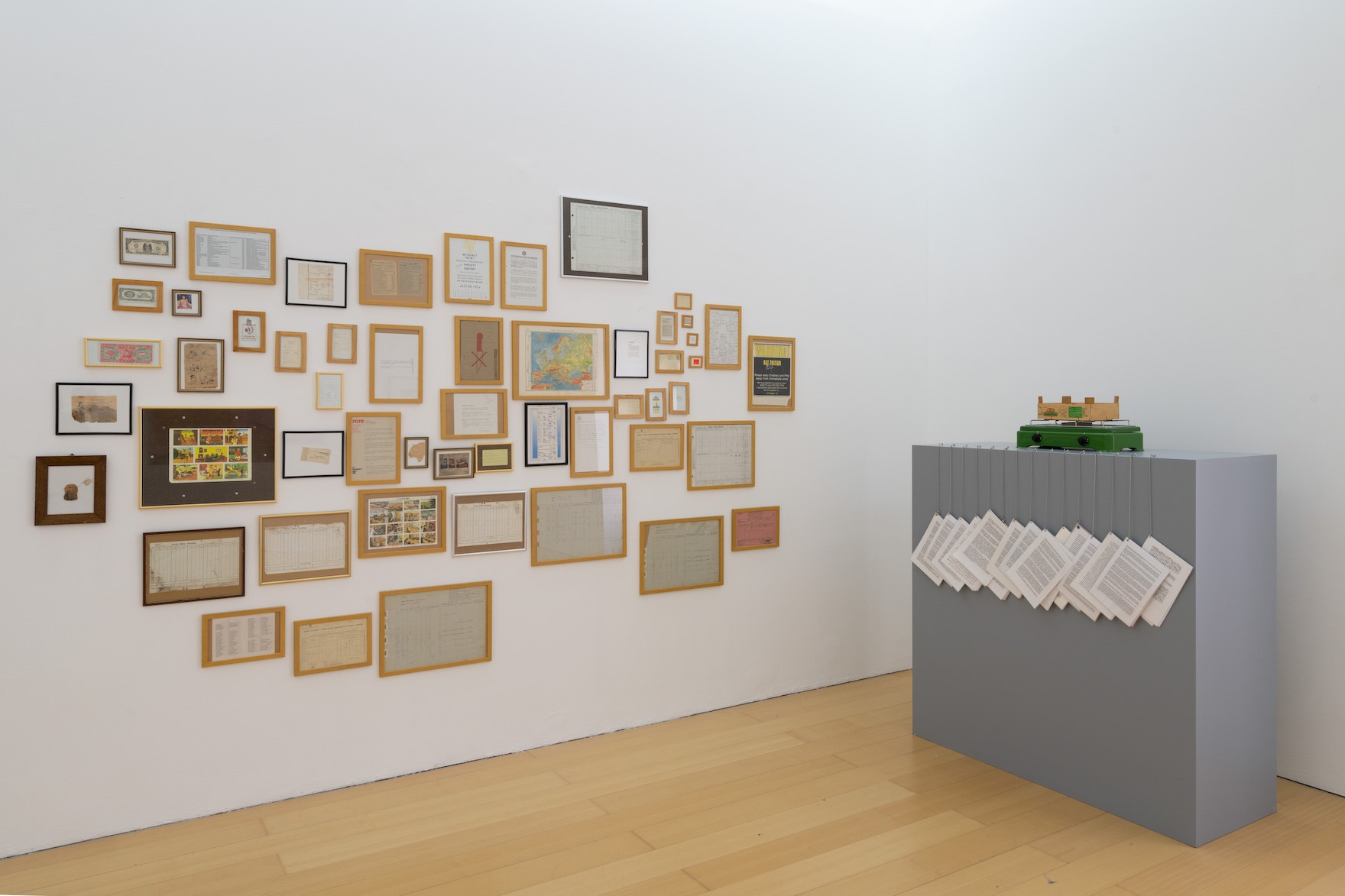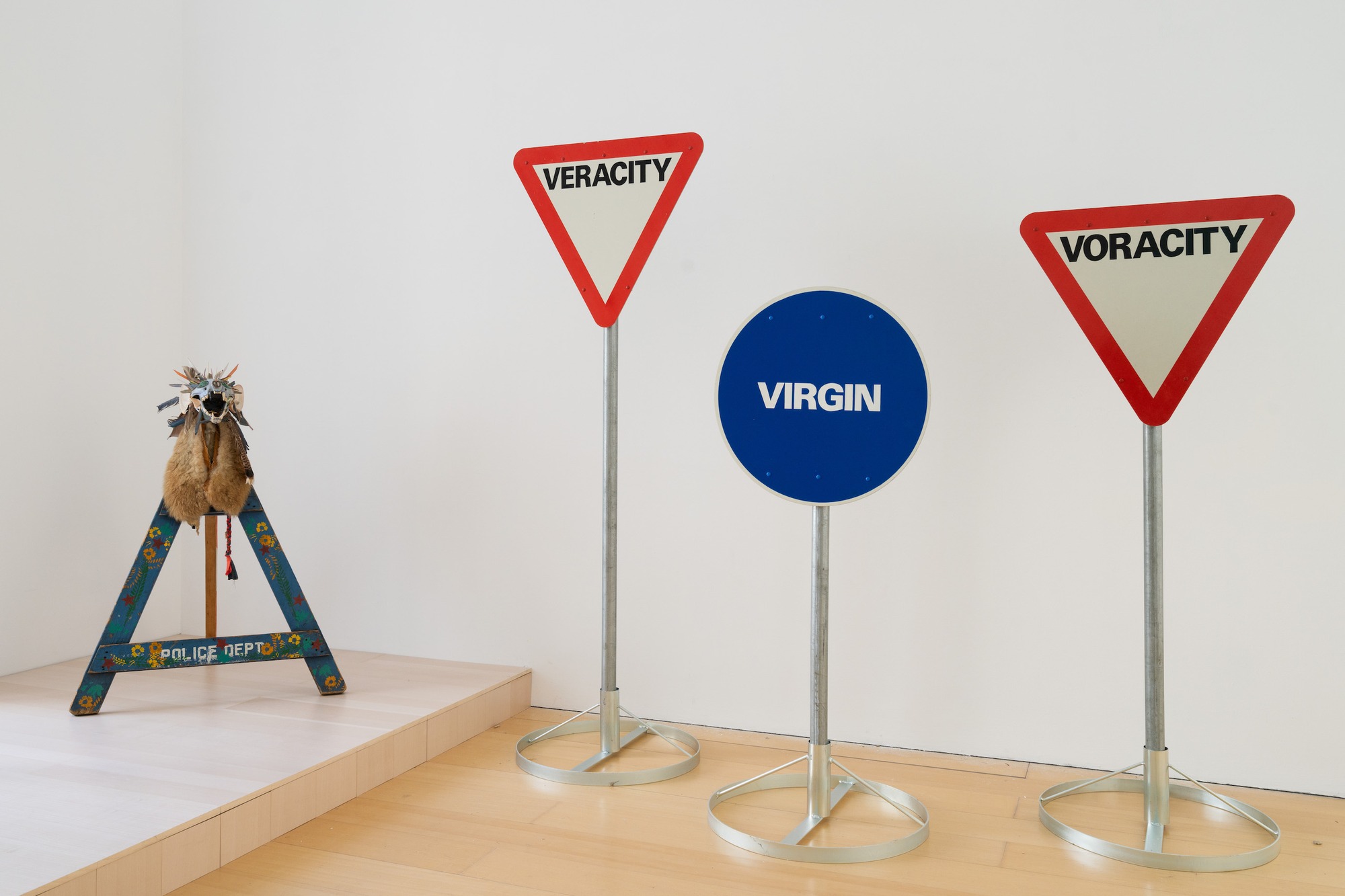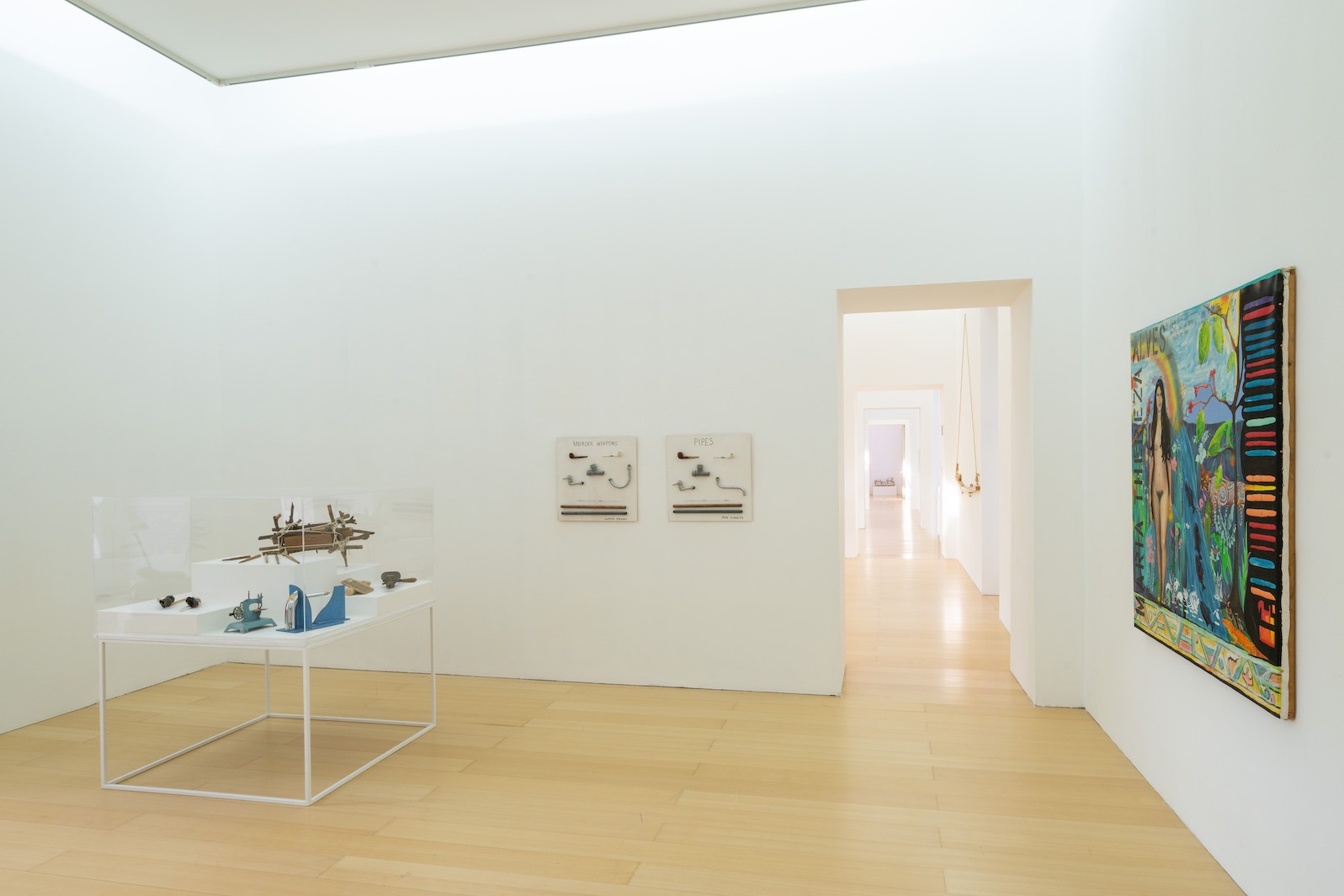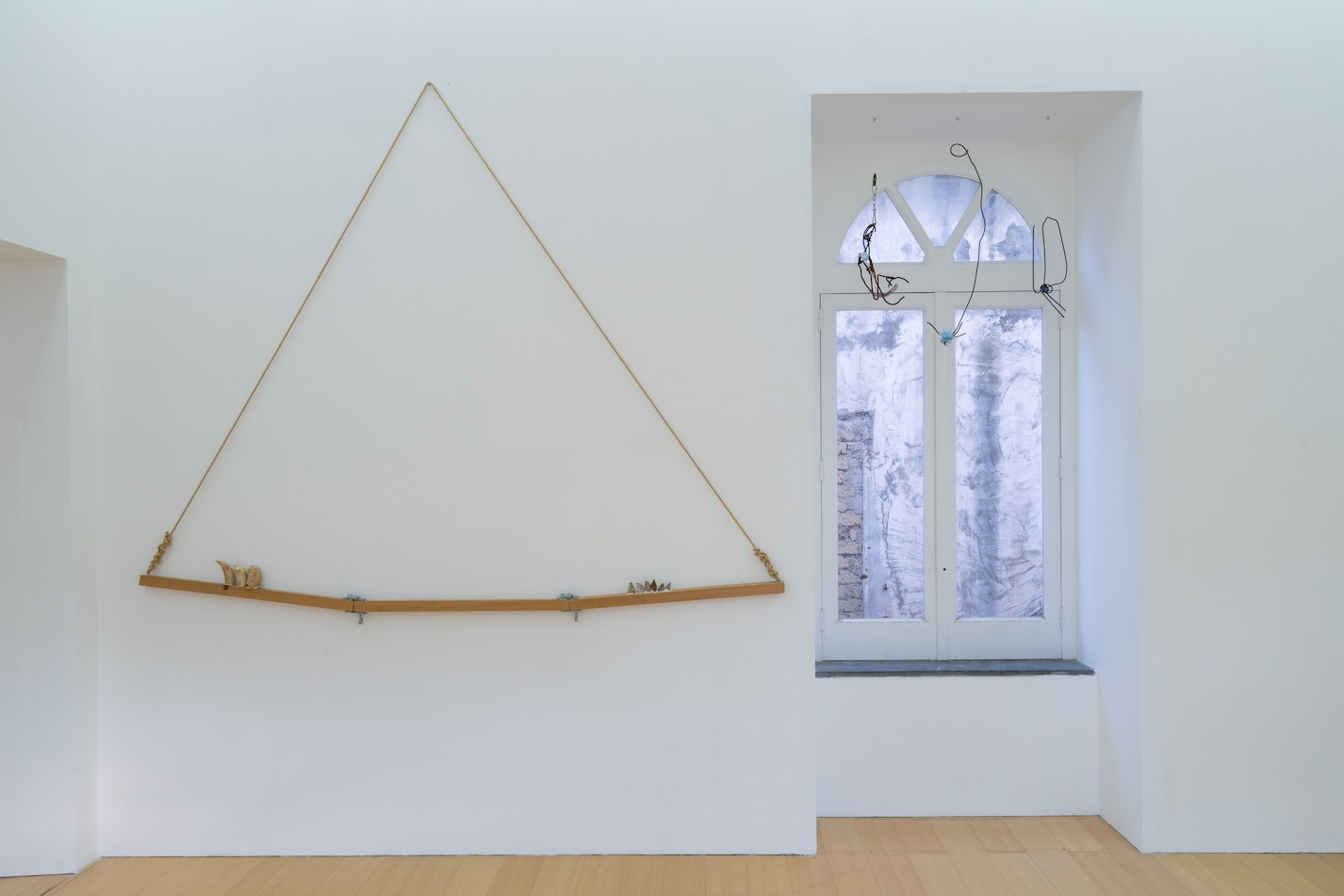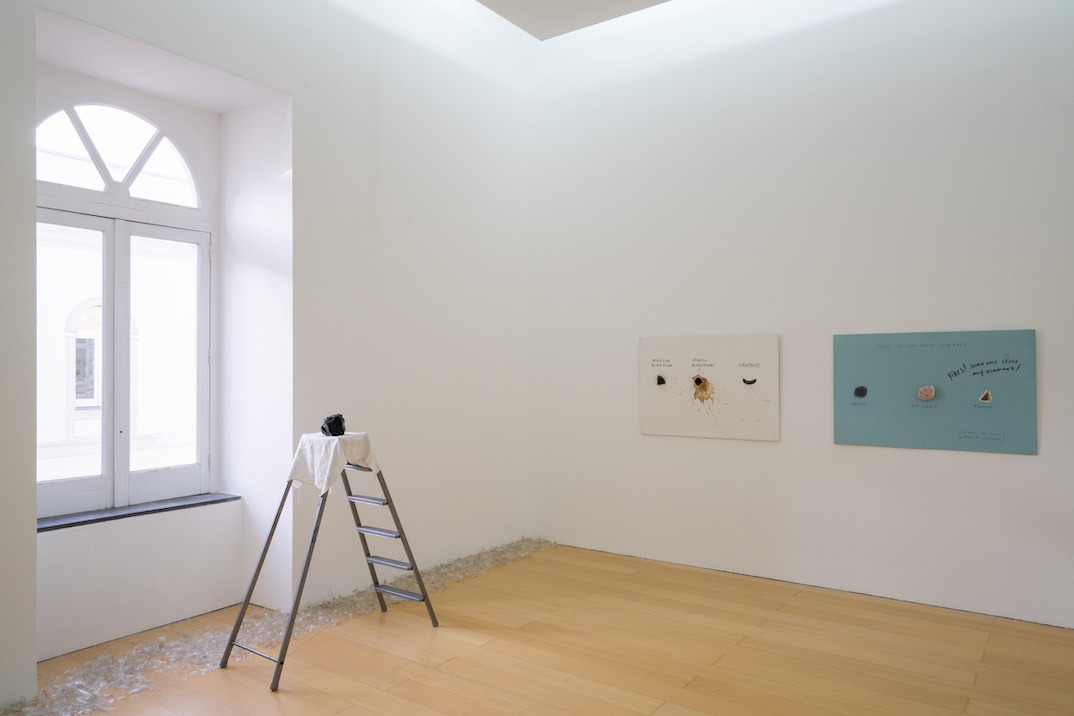Jimmie Durham
humanity is not a completed project
23 Dec 2022 - 10 Apr 2023
Artist, poet, performer, essayist, activist: Jimmie Durham (1940-2021) is a unique figure in the international art history of the last half century. His work addresses the foundations of European and North American culture, deconstructing received ideas and accepted categories. This first retrospective exhibition in Italy features over 150 works, some never previously exhibited. It creates links across time periods within thematic sequences, combining elements of chronology with a narrative approach and including references to the artist’s experiments with spatial strategies in key historical exhibitions.
Across a career spanning more than fifty years, Durham dedicated his practice to the critical decoding of the naturalised images and symbols that underpin dominant cultural systems. His works, marked by a strong vein of humour, range from sculptures to videos, poems, performances, installations, paintings, drawings, collages, prints and essays. Constructing ‘illegal combinations with rejected objects’, across natural and industrial materials, Durham generated ruptures within conventions of language and knowledge. The exhibition is a tribute to an artist whose protean, multi-layered work is fundamental to the understanding of contemporary art and its possible futures. The title, taken from a print by Durham, underlines his project to relativise as culturally specific the universalising and teleological notions of the human characteristic of European modernity.
The opening sequence lays out Durham’s critique of notions of authenticity, identity, truth and nationhood – ‘Veracity’ and ‘Voracity’ read two of his early sculptural signs. While at art school in Geneva from 1969, Durham was part of a network of thinkers and activists involved in Third World and Indigenous liberation movements, and in 1973 he returned to the US to join in civil rights struggles. He worked with the Central Council of the American Indian Movement (AIM), helping to establish AIM: Women of All Red Nation (WARN), and then from 1975, as founding director of the International Indian Treaty Council (IITC) at the United Nations, worked on the integration into international law of the ‘Universal Declaration of the Rights of Indigenous Peoples’. In 1979, he resigned from the AIM, expressing doubts as to its political autonomy, and shifted his focus back to art making, while also declaring his intent to maintain an engagement with ongoing struggles.
Durham published his first compendium of poems in 1983, Columbus Day: Poems, Drawings and Stories about American Indian Life and Death in the Nineteen-Seventies, and participated in landmark exhibitions at Kenkeleba House, an independent space on the Lower East Side that was at the centre of a different 1980s New York art scene, offering opportunities and critical engagement to non-white artists rarely invited to show in mainstream venues. Durham never felt himself circumscribed to speak only in relation to a specific identity; from his very first works, he criticised the construction of fixed notions of identity and their instrumentalisation in public discourse.
In 1994, Durham moved permanently to Europe, or, as he called it, ‘Eurasia’, after living for a period in Cuernavaca, Mexico. Initially working in Ireland, the Netherlands, Belgium, and France, he settled in Berlin after completing a residency at the German Academic Exchange Service (DAAD) in 1998. His explorations of the relationships between architecture, text and religious dogma ran in parallel to his critiques of established media and genres of European art. The exhibition culminates in an exploration of Durham’s investigative processes and of his attention to materials, including his deeply playful love of language. Words occupy a predominant place throughout his work, whether in poetry and performance, or visibly integrated in titles and textual interventions. He created a new semantics of aesthetics, playing with the détournement of meanings, sounds and inscriptions. A passion for science, and in particular theoretical physics, is expressed in many works, notably in his last anthology of poems, Particle Word Theory (2020).
Durham’s practice ran down lines of epistemological research, showing how art can create new methodologies, combining language and matter to establish an experimental dialogue. Art was no different to science in the artist’s approach to investigating the composition of matter and the limits of knowledge. Through his deep sensitivity to materials and language, his unceasing questioning of first principles and the strategies he developed of poetic assemblage and spatial articulation, Durham offered paths forward out of the contemporary impasse of received notions and categories of artistic practice.
Curated by Kathryn Weir
Across a career spanning more than fifty years, Durham dedicated his practice to the critical decoding of the naturalised images and symbols that underpin dominant cultural systems. His works, marked by a strong vein of humour, range from sculptures to videos, poems, performances, installations, paintings, drawings, collages, prints and essays. Constructing ‘illegal combinations with rejected objects’, across natural and industrial materials, Durham generated ruptures within conventions of language and knowledge. The exhibition is a tribute to an artist whose protean, multi-layered work is fundamental to the understanding of contemporary art and its possible futures. The title, taken from a print by Durham, underlines his project to relativise as culturally specific the universalising and teleological notions of the human characteristic of European modernity.
The opening sequence lays out Durham’s critique of notions of authenticity, identity, truth and nationhood – ‘Veracity’ and ‘Voracity’ read two of his early sculptural signs. While at art school in Geneva from 1969, Durham was part of a network of thinkers and activists involved in Third World and Indigenous liberation movements, and in 1973 he returned to the US to join in civil rights struggles. He worked with the Central Council of the American Indian Movement (AIM), helping to establish AIM: Women of All Red Nation (WARN), and then from 1975, as founding director of the International Indian Treaty Council (IITC) at the United Nations, worked on the integration into international law of the ‘Universal Declaration of the Rights of Indigenous Peoples’. In 1979, he resigned from the AIM, expressing doubts as to its political autonomy, and shifted his focus back to art making, while also declaring his intent to maintain an engagement with ongoing struggles.
Durham published his first compendium of poems in 1983, Columbus Day: Poems, Drawings and Stories about American Indian Life and Death in the Nineteen-Seventies, and participated in landmark exhibitions at Kenkeleba House, an independent space on the Lower East Side that was at the centre of a different 1980s New York art scene, offering opportunities and critical engagement to non-white artists rarely invited to show in mainstream venues. Durham never felt himself circumscribed to speak only in relation to a specific identity; from his very first works, he criticised the construction of fixed notions of identity and their instrumentalisation in public discourse.
In 1994, Durham moved permanently to Europe, or, as he called it, ‘Eurasia’, after living for a period in Cuernavaca, Mexico. Initially working in Ireland, the Netherlands, Belgium, and France, he settled in Berlin after completing a residency at the German Academic Exchange Service (DAAD) in 1998. His explorations of the relationships between architecture, text and religious dogma ran in parallel to his critiques of established media and genres of European art. The exhibition culminates in an exploration of Durham’s investigative processes and of his attention to materials, including his deeply playful love of language. Words occupy a predominant place throughout his work, whether in poetry and performance, or visibly integrated in titles and textual interventions. He created a new semantics of aesthetics, playing with the détournement of meanings, sounds and inscriptions. A passion for science, and in particular theoretical physics, is expressed in many works, notably in his last anthology of poems, Particle Word Theory (2020).
Durham’s practice ran down lines of epistemological research, showing how art can create new methodologies, combining language and matter to establish an experimental dialogue. Art was no different to science in the artist’s approach to investigating the composition of matter and the limits of knowledge. Through his deep sensitivity to materials and language, his unceasing questioning of first principles and the strategies he developed of poetic assemblage and spatial articulation, Durham offered paths forward out of the contemporary impasse of received notions and categories of artistic practice.
Curated by Kathryn Weir

